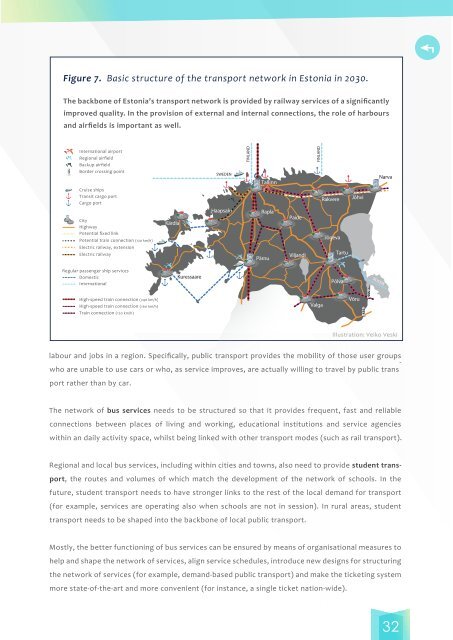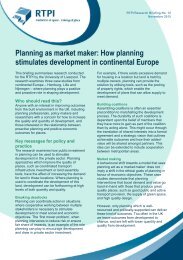estonia-2030_en
estonia-2030_en
estonia-2030_en
You also want an ePaper? Increase the reach of your titles
YUMPU automatically turns print PDFs into web optimized ePapers that Google loves.
Figure 7. Basic structure of the transport network in Estonia in <strong>2030</strong>.The backbone of Estonia’s transport network is provided by railway services of a significantlyimproved quality. In the provision of external and internal connections, the role of harboursand airfields is important as well.FINLANDFINLANDSWEDENTallinnNarvaRakvereJõhviKärdlaHaapsaluRaplaPaideJõgevaPärnuViljandiTartuRegular pass<strong>en</strong>ger ship servicesKuressaarePõlvaRUSSIAValgaVõruIllustration: Veiko Veskilabour and jobs in a region. Specifically, public transport provides the mobility of those user groups-who are unable to use cars or who, as service improves, are actually willing to travel by public transport rather than by car.The network of bus services needs to be structured so that it provides frequ<strong>en</strong>t, fast and reliableconnections betwe<strong>en</strong> places of living and working, educational institutions and service ag<strong>en</strong>cieswithin an daily activity space, whilst being linked with other transport modes (such as rail transport).Regional and local bus services, including within cities and towns, also need to provide stud<strong>en</strong>t transport,the routes and volumes of which match the developm<strong>en</strong>t of the network of schools. In thefuture, stud<strong>en</strong>t transport needs to have stronger links to the rest of the local demand for transport(for example, services are operating also wh<strong>en</strong> schools are not in session). In rural areas, stud<strong>en</strong>ttransport needs to be shaped into the backbone of local public transport.Mostly, the better functioning of bus services can be <strong>en</strong>sured by means of organisational measures tohelp and shape the network of services, align service schedules, introduce new designs for structuringthe network of services (for example, demand-based public transport) and make the ticketing systemmore state-of-the-art and more conv<strong>en</strong>i<strong>en</strong>t (for instance, a single ticket nation-wide).32




